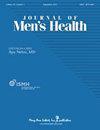Digit Ratio (2D:4D) and Performance of Chinese Elite Archers
IF 0.6
4区 医学
Q4 Medicine
引用次数: 0
Abstract
Background : Previous studies have found a correlation between digit ratio (2D:4D) and performance in sporting events which require physical competence. Such correlation, however, has not been well studied in technique-oriented sports. This study explored the correlation between 2D:4D and sporting performance of Chinese elite archers. Also it provides some references for sports research in other fields. Methods : We conducted the study with 31 Chinese elite archers (15 males and 16 females) preparing for the 2020 Tokyo Olympic Games and collected their 2D:4D ratios by measuring their index and ring fingers. The study also asked them to take physical fitness tests including push-ups, decline sit-ups, half-squat and a 4000-meter run, and obtained their results in former ranking tournaments and Olympic elimination series. The study recorded every entry of data in a “mean ± standard deviation” (M ± SD) format and processed them in SPSS 24.0 to produce One-Way ANOVA and Pearson correlations. Results : Our study found no significant difference between varied sporting levels in the left 2D:4D, and between world-class and national-level archers in the right 2D:4D ( p > 0.05), yet a significant one between left-right 2D:4D of world-class, national-level, and level-1 archers ( p < 0.01). We also found no significant correlation between the left 2D:4D and specific physical fitness test results, and between those archers’ results. Similarly, there was a significant negative correlation between the right 2D:4D and specific test results ( p < 0.05), and a strong negative correlation between that and results of ranking tournaments ( p < 0.01) and Olympic elimination series ( p < 0.01). Conclusions : Chinese elite archers with lower right 2D:4D are of better physical fitness and enhanced sport performance. Hence, the right 2D:4D may act as a critical indicator in selecting excellent archers.中国优秀弓箭手的数字比(2D:4D)与成绩
本文章由计算机程序翻译,如有差异,请以英文原文为准。
求助全文
约1分钟内获得全文
求助全文
来源期刊

Journal of Men's Health
Medicine-Urology
CiteScore
0.70
自引率
28.60%
发文量
153
审稿时长
10 weeks
期刊介绍:
JOMH is an international, peer-reviewed, open access journal. JOMH publishes cutting-edge advances in a wide range of diseases and conditions, including diagnostic procedures, therapeutic management strategies, and innovative clinical research in gender-based biology. It also addresses sexual disparities in health, life expectancy, lifestyle and behaviors and so on. Scientists are encouraged to publish their experimental, theoretical, and descriptive studies and observations in as much detail as possible.
 求助内容:
求助内容: 应助结果提醒方式:
应助结果提醒方式:


